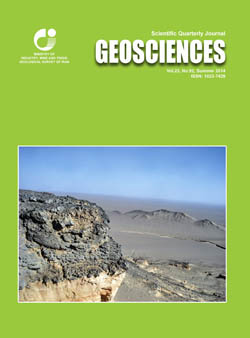Document Type : Original Research Paper
Authors
1 Ph.D.Student, Geology Department, Faculty of Natural Sciences, University of Tabriz, Tabriz, Iran.
2 Professor,Geology Department, Faculty of Natural Sciences, University of Tabriz, Tabriz, Iran.
3 Associate Professor, Geology Department, Faculty of Sciences, Urmia University, Urmia, Iran.
Abstract
The Shahbolaghi laterite deposit is located in ~40 km southeast of Damavand, Tehran province. This deposit was developed as stratiform horizons within the shales and sandstones of Shemshak formation (Jurassic). Mineralogical investigations show that the major minerals in this deposit include hematite, boehmite, and anatase accompanied by lesser amounts of goethite, magnetite, chamosite, kaolinite, quartz, calcite, diaspore, zircon, pyrite, and rutile. The microscopic evidences such as development of spastoidic textures within the ores suggest a high energy water-saturated sedimentary environment during the lateritization processes. By considering the mineral assemblage and textural characteristics, deposition and diagenesis of this horizon occurred in an oxidizing and almost near surface environment. Based on the obtained data from the field observations, geochemistry of major, trace, and rare earth elements the lateritic horizon at Shahbolaghiwas developed probably byalteration of parent rocks with basaltic composition. The bauxitization process was occurredintrends of kaolinization, destruction of kaolinite, and deferrugenization. The geochemical investigations indicated that the distribution of trace elements in this horizon was controlled by clays and minor mineral phases.
Keywords

